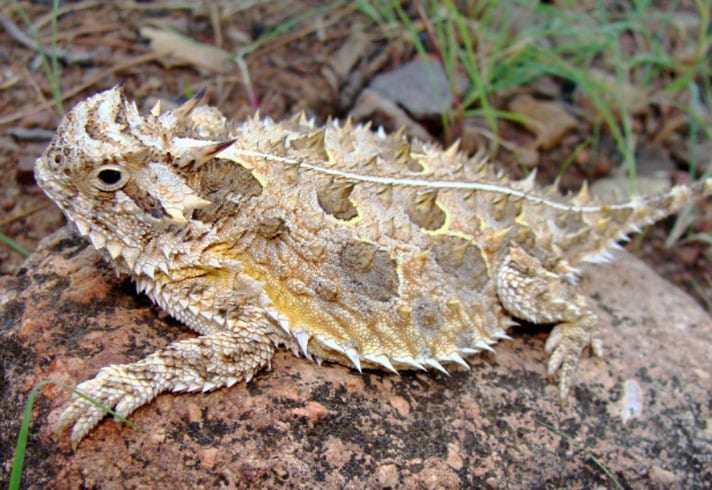The San Antonio Zoo announced that it has released 34 Texas horned lizards that were captive bred as part of the zoo’s Center for Conservation and Research.
The San Antonio Zoo announced that it has released 34 Texas horned lizards (Phrynosoma cornutum) that were captive bred as part of the zoo’s Center for Conservation and Research. The horned lizards were hatched at the CCR this past summer.
“Our team at Center for Conservation & Research at San Antonio Zoo works tirelessly to save species from extinction,” Tim Morrow, President & CEO of San Antonio Zoo said in a statement posted to social media. “This is a great win for conservation and Texas.”
The center noted during the release of these lizards that 34 released this week makes the total number of horned lizards released by the zoo’s CCR to 200. the center plans to release more this month.

Matt Jeppson/Shutterstock
During the release of the lizards, the CCR team found two horned lizards that they believe came from a prior release. They also found scat samples that will be sent to Texas Christian University for analysis. The team also found a sub-adult near the release site, which the team believes shows that prior released lizards are breeding successfully in the wild. An adult horned lizard was found on an adjacent property to the release site, across a county road, which the team says indicates that the reptiles are dispersing. This is a positive sign for the center’s goals of expanding the range of these reptiles.
Reintroducing Texas Horned Lizards Into The Wild
Where Did All The Horny Toads Go?
Texas Wants To Know When You see A Horned Lizard
Texas Horned Lizard Information
Horned lizards (Phrynosoma), often called “horny toads” or “horned frogs” are quite possibly the most gregarious genus of lizard species in North America. Of the 15 known horned lizard species in the United States, the Texas horned lizard is the most widely distributed. Once abundant in much of the Southwest, the Texas horned lizard has disappeared from much of its range in Texas and Oklahoma. It is listed as Threatened by the state. This is due to a variety of factors, including loss of habitat, planting of non-native grasses, conversion of land to pastureland and agricultural use, and the introduction of the invasive fire ant, which preys upon the native ants that horned lizards require to survive. These little dinosaurs do not make good pets because they require a steady diet of harvester ants.


